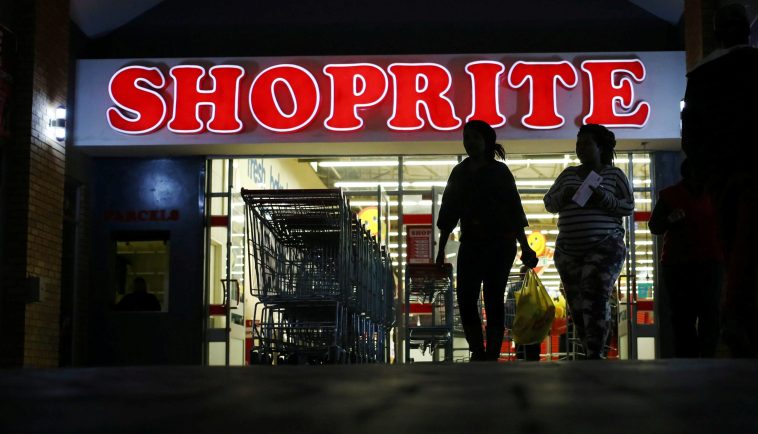Shoprite, which published its 2021 financial results last Tuesday (7 September), has sold its supermarket business in Nigeria, closed three of its stores in Kenya, and discontinued operations in Uganda and Madagascar. The stores in Zambia and Angola were unaffected.
In South Africa, however, Shoprite is on an ambitious expansion drive. In August this year, the retailer acquired Massmart’s non-core food businesses; the transaction is subject to regulatory approval, including from South Africa’s competition authorities.
Shoprite Holdings owns and operates several stores: Shoprite, Usave, LiquorShop, Checkers, Checkers Hyper and House & Home.
Majid Al Futtaim, the franchisee of French retailer Carrefour, has already swooped in and concluded an agreement that will see Shoprite Uganda transfer its leases to the Dubai-based group by the end of the year.
“This agreement represents our continued investment in East Africa. We look forward to strengthening our offering in the region,” says Hani Weiss, the CEO at Majid Al Futtaim Retail.
According to Shoprite CEO Pieter Engelbrecht, the period under review is “a significant year for our Supermarkets Non-RSA segment.” He says: “The region remains challenging… ”
A pioneer retreats
Wilhelm Hertzog, an analyst and portfolio manager at the Cape Town-based Rozendal Partners, says Shoprite’s exit from West and East Africa was an interesting strategic move.
“Shoprite was the pioneer of formal retail in the rest of Africa, at least, from a South African corporate point of view. Shoprite opened its first store in Zambia, I think, in 1995. They’ve been operating outside of South Africa’s borders for 30 years now,” Hertzog says.
“If you look at the timing of when Shoprite and the other South African retailers expanded into the rest of Africa and when they have withdrawn, it follows the macroeconomic cycle in those countries,” he tells The Africa Report.
… the way that South African retailers have approached the rest of the continent may be too much [of] chasing the good times…”
The influx by South African retailers into the rest of the continent can be traced back to the boom years of the commodities supercycle and the few years thereafter, starting in the mid-2000s until early 2010. “Those were the years when South African retailers were piling into the rest of Africa, opening stores wherever they could, including Shoprite,” Hertzog says.
Back then, the economies in the region were doing well and it looked like an attractive place to do business. However, following years of depressed oil and commodity prices coupled with struggling economies, retailers are racing for the exit. Nevertheless, Hertzog cautions against this.
Balancing the good times with the bad
“I am not sure chasing the cycle is the right way to approach the problem. You have to take a view on the rest of the continent as either a place you can do business, or you can’t,” says Hertzog. If South African corporates go with the former assessment, he says, “then you need to take a multi-decade view and ride out the cycle.”
Over the course of a full cycle, businesses were likely to generate decent returns – commensurate with the risks in the rest of the region. Piling in and out of countries based on economic cycles is not the optimal solution to the problem.
… it is tough to do business in the rest of the continent. Business practices are different to what one is used to in South Africa…”
“I think the way that South African retailers have approached the rest of the continent may be too much [of] chasing the good times and running away from the bad times; as opposed to accepting that there will be good and bad times, seeing things through and generating great returns cyclically,” he says.
Hertzog cites businesses, which are perhaps not publicly listed, that are driven by South Africans and are making good money in other parts of the continent.
Admittedly, he says, “it is tough to do business in the rest of the continent. Business practices are different to what one is used to in South Africa. That is, maybe, a problem because what is acceptable business practice in certain countries may not necessarily be accepted business practice for a listed South African corporate,” the portfolio manager says.
Home is where the growth is
Although Shoprite is part of the South African retail exit from the rest of the continent, back home, the outlook and performance could not be more different.
In its latest set of results, Shoprite has shown that it is generating healthy profit margins in South Africa. “That operating margin of 6%-plus is world class – probably [the world’s] leading in food retail,” Hertzog says.
That performance partly explains Shoprite’s view that the retailer’s acquisition of Massmart’s non-core assets “will accelerate […] plans to expand […] physical reach in these businesses and, in turn, bolster […] brand presence.”
“Shoprite is managing to do that while being the price leader in the market. If you can generate such high profit margins while offering consumers the lowest prices, it must show that there’s scope for you to grow in the market,” says Hertzog.
Furthermore, Shoprite knows how to run an efficient distribution and supply chain system. “I think there is scope, increasingly, to formalise the lower end of the market. Usave is a business with great runway,” he tells The Africa Report.

